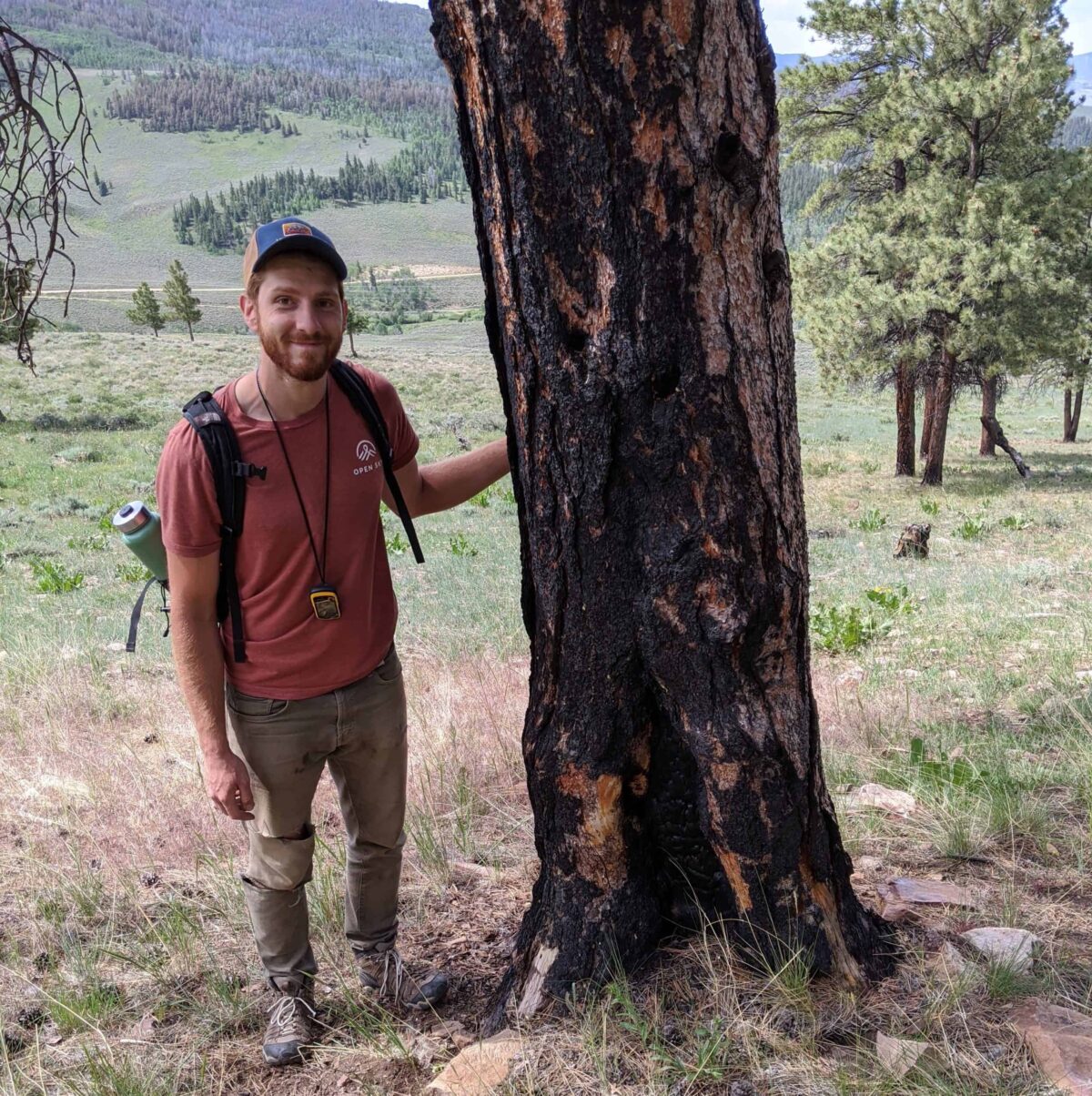
“The prevailing understanding was that there wasn’t really [wild]fire [in the valley], because of the vegetation type. It’s a high elevation valley– it’s cool, it’s wet,” says Petar Simic, a Master’s of Ecology (MSE) student who studied historical fire within Gunnison Valley for his Master’s thesis. Simic’s work demonstrated that fire actually did play a significant role in the ecological history of the Gunnison region.
Before attending Western, Simic managed a biodynamic farm in Ann Arbor, Michigan after completing his undergraduate education at Kalamazoo College. That experience, he says, was a study in the importance of regenerative land management practices.
“It got me interested in this idea that human beings can actually have a relationship with the natural world where they can take what they need and have a positive impact on their local ecology,” says Simic, who was also exploring examples of Indigenous land stewardship.
He was on the lookout for a science-based program that would allow him to explore similar social-ecological connections, and made a connection with Dr. Jonathan Coop, an Ecology Professor at Western, who pitched Simic on a project that would examine the fire history of the Gunnison country with an emphasis on the impacts on Gunnison sage grouse (GUSG).
GUSG are unique birds, the rarest of 10 species of grouse in the U.S. The Gunnison sage grouse was discovered in 2000 by a team of researchers that prominently included Western Environment and Sustainability (ENVS) Professor Jessica Young. The bird’s remaining population, the species is currently federally listed as “threatened”, is heavily centralized in the Gunnison basin.
Simic set off to understand the historical nature of fire in Gunnison, interviewing locals with multigenerational knowledge, including Richard Fike, the Founder of the Museum of the American West. Simic also interviewed various Ute tribal members, including Regina Lopez-Whiteskunk, a fellow graduate student at Western, in addition to employees of the Montrose-based Ute Indian Museum.
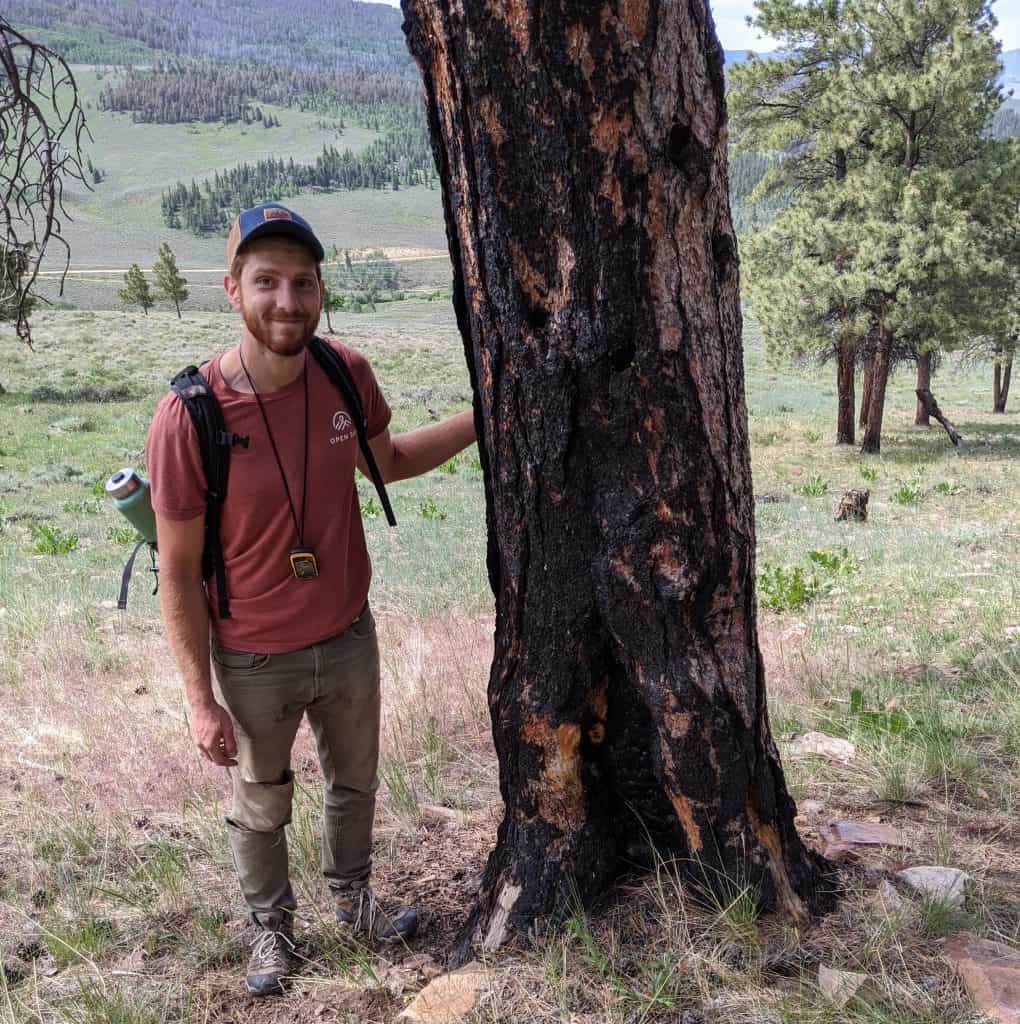
A primary component of his project was the study of tree rings, known as dendrochronology. Tree rings provide a window into fire history. “You have that abrupt change in the late 1800s, where you have no fire with Euroamerican settlement,” notes Simic of his findings.
His research also sought to explore how much of the shift in fire activity was a direct result of White settlement and the associated introduction of cattle grazing, and how the removal of Ute peoples from the Gunnison landscape factored in.
Simic notes that in his conversation with Ute peoples, fire was not referenced as a commonly deployed cultural tool. Instead, Ute people referred to fire as sacred, a gift from the creator, not something regularly utilized by humans. This stands in contrast to other tribes like the Yurok and Karuk in California, and Native peoples within the Great Plain region, who made more frequent, culturally integrated usage of fire.
Tracing back to the late 1800s, early settlers and miners deployed fire of their own for utilitarian, extractive purposes. “Some of these [were] really destructive ones—miners would light fires so they could see the soil to help them mine, sheepherders would light fires to clear out the trees, timbermen would light fires to make it easier to [cut] the timbers,” relays Simic.
In retaliation for injustices wreaked upon the land and the Natives, Ute peoples (described as “rebellious Utes” in the Lake City newspaper, notes Simic) lit a fire of their own in, torching White settlements.
Simic explains that his fire history sites recorded a mean fire return interval (how often fires occur, on average) of 18 to 80 years, substantially lower than in other regions, particularly prairie ecosystems, which can burn as frequently as every three to five years.
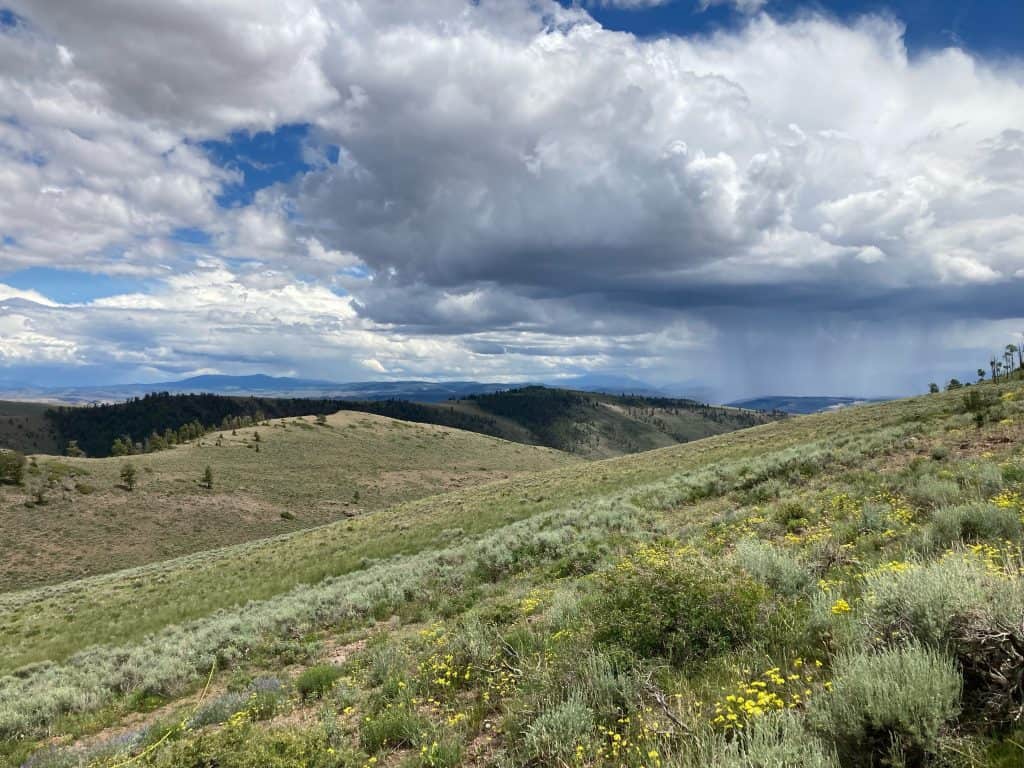
The majority of the fires Simic identified took place in the dormant season, a factor which perplexed Simic due to the high, snow-fed moisture content and cold temperatures that characterize Gunnison winters.
His project found him collaborating with the U.S. Geological Survey (USGS), a research arm of the federal government, including working with Dr. Ellis Margolis, a critical project partner. Dr. Margolis is a research ecologist based out of the Fort Collins Science Center at Colorado State University. Dr. Margolis works predominantly in New Mexico and is an expert on dendrochronology.
Dr. Margolis, in conjunction with Dr. Coop, theorized what later became Simic’s study in 2019. The pair found fire scars in the north Powderhorn area that disputed the notion that wildfire was absent in Gunnison country, and their initial sampling affirmed the presence of fire on the landscape.
Dr. Margolis and Manuel Lopez, a former USGS scientist who now works for Bandelier National Park, trained Simic up to proficiency on the intricacies of tree ring dating. In dendrochronology, even collecting the sample can be challenging— the objective is to produce a core sample of the tree of a particular width without damaging the tree, an outcome accomplished by deploying a boring cut with a chainsaw.
“Then you gotta process the wood, you got to glue it to the plywood, you flatten it with the bandsaw, and then you sand it really [well], and then [you do] the actual dating– which is a really big learning curve,” says Simic.
To successfully date tree rings, researchers have to develop a near-encyclopedic knowledge of the history of precipitation in an area, identifying and counting off years where it rained so little that trees did not grow at all.

By cross referencing tree rings with established data from other trees and the meteorological record, dendrochronologists can date trees that trace back thousands of years (Simic adds that some bristlecones in the Great Basin have been dated back to 5000 B.C) With this knowledge, they can discern which years had fire on a landscape by identifying the tree’s burn scars.
Simic remembers specific instances working with Dr. Margolis down in New Mexico where he was attempting to count off years on the tree rings, venturing into the past from a tree that died in 2020.
“By the time I hit 1990 he was like ‘you missed 12 years that the tree just didn’t grow…you just have to know [when] you’re counting back, if [a year] is not small then it’s missing,” explains Simic of the exhaustive process, where specific, dry years can prove nearly, or literally, undetectable. It’s a process of “verified predictions,” as Dr. Margolis terms it, that requires extensive practice.
Dendrochronology only works reliably in regions with lower precipitation where the trees are undergoing ecological stress. “As a rule, to be able to date these [trees], you want trees that are stressed out, because the trees that are really happy don’t record the dry years and then you can’t date them, [because] there’s no pattern to the tree rings,” Simic adds.
Lack of stress is not an issue here in Gunnison, where trees have been under heavy stress from a lack of reliable precipitation for more than three decades. In particular, 2002 stands out as a historically, wickedly dry year, per Simic.
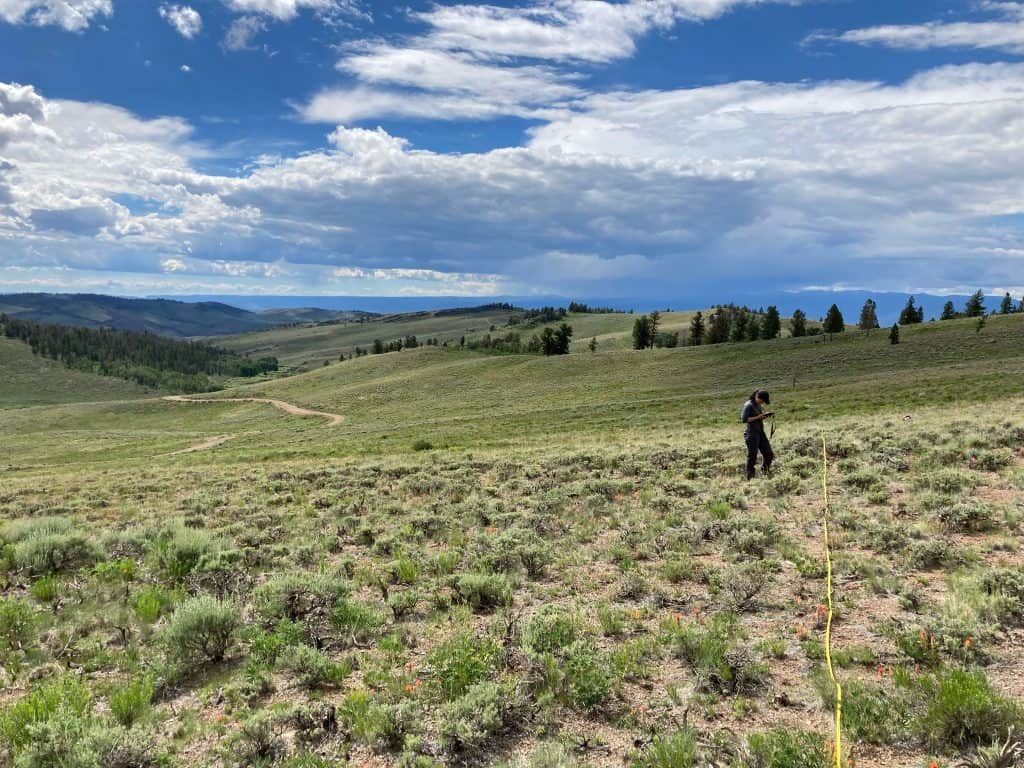
“I had samples that went back to the 1360s and there’s nothing in the tree ring history compared to the last 30 years and to 2002, down the board you can expect that trees did not grow that year; it was so dry.”
One complicating factor is that around Gunnison, only a few species exhibit fire scars, which requires adaptations to ensure survival after fires. “The main goal there was to scour the Gunnison Basin for ponderosa pine and Douglas fir, they just happened to be at these ecotones, these sagebrush-forest ecotones,” says Simic of the two native trees in the region which reliably produce fire scars. Ecotones are the shared edges of distinct ecosystems where habitat types can blend together.
So, Simic set off to sample every stand of Douglas fir and ponderosa pine he could find in the Gunnison watershed: the northern portion of Powderhorn Wilderness, Sapinero Mesa, Old Monarch Pass, and a few other locales made up the bulk of Simic’s study.
At each venue, Simic aimed to study at least 10 trees, a defense against potential data skewing posed by trees that sit up on ridgelines, which can get struck by lightning on a near-yearly basis (lightning scars and fire scars can bear an uncanny resemblance).
In the north Powderhorn, Simic found that his sites burned at an interval of roughly every 40 years. Some sites Simic sampled, in stark contrast, have seen zero fires from 1882 through modern day. This imbalance reflects the western region’s history of indiscriminate fire suppression over the last 100 plus years.
Simic says that across similar areas of study, there is a natural desire among dendrochronologists and fire managers to take their recently discovered fire data and seek to replicate historical fire conditions on the landscape via the use of prescribed fire.
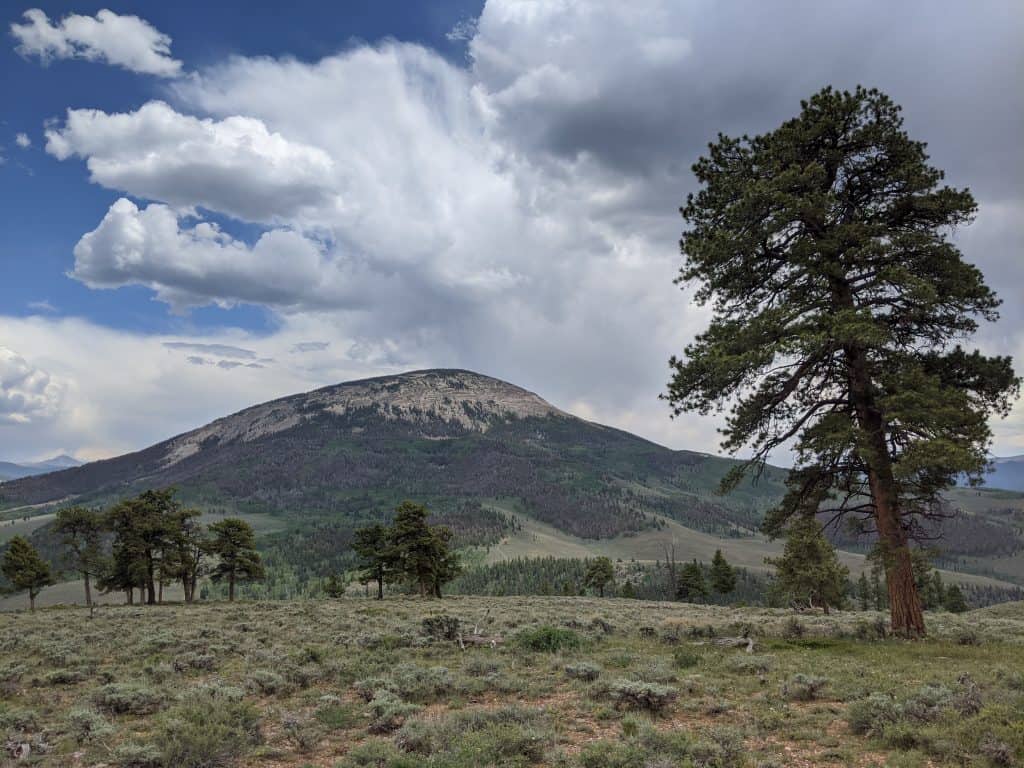
Simic is quick to note that a restoration to the historical average is not feasible in the modern “You can’t do that because there’s a lot of conditions that have changed pretty radically from historical conditions,” he notes.
Instead, he advises that fire managers utilize the historical data to explore options to bring fire into the landscape in the modern day more gradually, properly accounting for land use, hydrology and precipitation changes, as well as other climate change impacts.
Simic’s research showed that sagebrush likely burned much much more than it does today, which may have benefited the Gunnison sage grouse by allowing for a mosaic of different habitats. Sagebrush cannot survive wildfire, but the death of some dense sagebrush areas, at least in theory, creates space for the development of habitat rich in grasses and forbs that provide the insects and other food sources required to sustain healthy GUSG populations.
“[GUSG] have a high diversity of habitat requirements, they need dense sagebrush for nesting and wintering– a food source in the winter, but in the other seasons, like for [their] leks– they really are on a forb and grass food source in the summer. If you just have a sea of dense sagebrush, it doesn’t have those forbs and grasses and nesting sites,” Simic explains.
Today, reintroducing fire on a broad, widespread basis to sagebrush ecosystems is off the table. Given the combination of a drier, hotter landscape, the fires would be riskier to human settlements and development, and considering the perilous state of the GUSG population, such a bold intervention on sage grouse habitat could prove catastrophic if it backfired, including the possibility to pave a direct pathway for invasive species like cheatgrass to further invade.
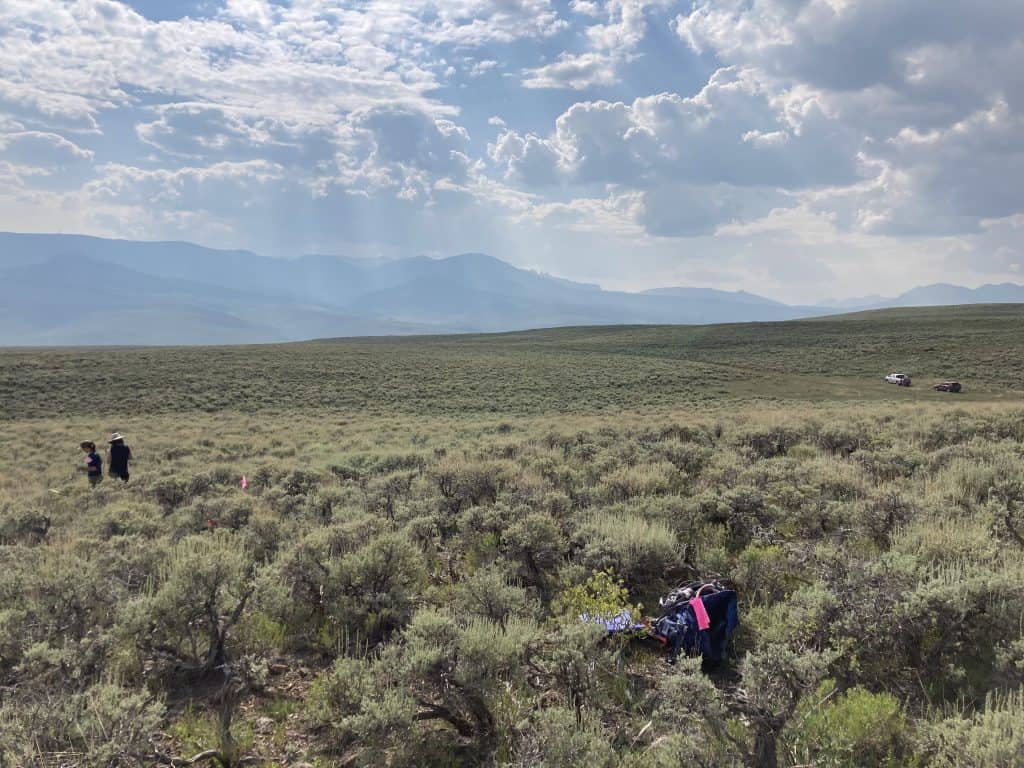
“My recommendation to managers would be to burn some unoccupied habitat and continue to monitor for things like cheatgrass invasion in these areas, [and] continue to monitor for raven predation, which is a big [issue] for the greater sage grouse – ravens just decimate their eggs,” Simic adds.
He notes that some assumptions have been made linking the threats to greater sage grouse populations to those facing GUSG populations. “I think it’s important to ask some questions to make sure that’s true,” he adds, noting that the Great Basin region has far less shrub cover and a far worse cheatgrass invasion.
While giving consideration to caution, Simic believes that the time is now to experiment with putting fire on the ground. “I thank that with climate change and drought, action needs to be taken now–there’s a sense of urgency…rather than wait for conditions to keep drying and keep warming where our window for healthy fire becomes smaller and smaller and smaller,” he says.
“I think it’s really courageous, and it almost takes an aspect of risk-taking for these fire specialists to put fire on the ground,” says Simic, who raises incidents where well-planned prescribed burns escaped due to unforeseen extreme weather conditions.
He continues, “It’s tough because [fire managers] understand the importance of this ecological process of fire, and the effects fire suppression has had on these landscapes, and now [they’re] trying to slowly reintroduce [fire] to create this healthy ecological process rather than a destructive one–they have to put their necks on the line,” he adds, adding, “I think we need more policy to help support these fire specialists in doing this.”

Simic cites Brian Stevens, a Fire Management Specialist for the Bureau of Land Management (BLM) who plans to burn the Powderhorn Wilderness, a development that challenges years of assumptions about wildfire in the west, wilderness, and agency land management. “I think that future [wild]fires are just going to drive home the importance of healthy, ecological fire,” relays Simic.
Simic recently defended his thesis, and will now work to incorporate corrections before his final submission. After graduation, he will look to submit his work to the “Journal for Ecological Applications”, and then take a much needed hiatus from the pressures of graduate school. He has plans to travel to Croatia, where his parents are from, for a five week trip.
Later this summer, Simic will explore the field-based side of wildfire, working with Stevens out of the Montrose Field Office as a seasonal firefighter.

